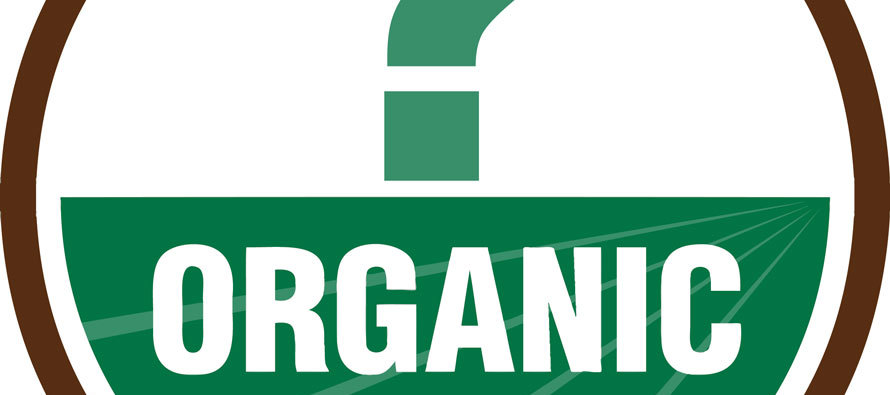Organic: What Does It All Mean

Organic, local, biodynamic, ethical, free range, natural, grassfed, and GMO free. Confused? You should be. With so many food buzzwords, and questions like ‘is raw cacao powder healthy‘? So many talking heads in the media using them, and a new “Super Cure Everything Diet” coming out seemingly every six months, it’s enough to make you feel like the Food Pyramid fell on your head. And it doesn’t help that the multinational food conglomerates want to capitalize on the specialty food craze. In May 2009, a snack chip company launched an ad campaign claiming its potato chips were “local,” all 2 billion pounds of them, which came from 27 different states. The company’s rationale was that the potatoes were grown near the processing plants where they were sliced, fried and put into bags and shipped all over the country. The lesson is that if there’s money to be made by using certain food buzzwords, you can be sure a few fibs will be told.
Originally, these food buzzwords developed from grassroots movements outside of the mainstream food system. These grassroots movements established standards to help concerned consumers more easily find and buy food they could feel good about eating. “Organic,” for instance, is a word which sprouted from the desire to avoid the chemical sprays which entered agriculture in the early 1900s.
Organic agriculture was an underground movement until the 1970s, and considered little more than a fad until the late 1990s. With the explosive growth of Whole Foods and an increasing interest in health and nutrition, major food companies started buying organic food companies and promoting them zealously. Today, organic food is mainstream. Everyone has heard of it, and there’s probably even something organic for purchase in your favorite gas station.
But to the purists, “organic” doesn’t mean now what it used to mean in the 1970s. When the big players like the Federal Government and Big Business started to get involved, they started to change what it meant to be “organic” and issued regulations that could be manipulated so that it was easy to follow the letter of the law, but not necessarily its spirit.
When the USDA wrote the first draft of national organic regulations, they allowed the use of sewage sludge as fertilizer. Using sewage sludge as fertilizer is a common practice in non-organic agribusiness, but organic supporters freaked out. Can you imagine using the gunk in your sewer system on your food, and then calling it organic?
The USDA received a record amount of negative feedback from the public, so it revised its earlier decision. But still, the original organic movement feels cheated by a lot of the lobbying that happened. It’s like a really cool band that signed on with a major record label and was never as good as they used to be after that. It kind of makes you want to throw away the t-shirt.
Regardless of these frustrations with the USDA, hopefully the following definitions of these food buzzwords are in plain English we can all understand.
—
Organic: Food produced without the use of manmade chemicals, particularly those made from petroleum. Food may not contain any GMOs (genetically modified organisms).
Local: Food produced in a location common to the grower and the eater, usually within a radius of 25-100 miles.
Biodynamic: Food produced under guidelines established in the 1920s by Rudolf Steiner of Austria. Major considerations are given to the relationship of the farm to the cosmos, using a philosophy based on movements of the moon and constellations. Fertilizers are produced on the farm by composting animal manure and site-grown plants.
Ethical: Food produced in ways that do not exploit workers, especially migrant laborers in the U.S. or farm workers in developing countries. The most widely recognized ethical food certification is Fair Trade.
Natural: This is the most confusing term because it does not have any regulation or official definition. It generally means that the food was processed minimally and without artificial additives.
Grassfed: A somewhat misleading term because all cattle eat grass for at least part of their lives. It’s common for producers to graze cattle until they start fattening them on corn before slaughter. Look for “grass finished” instead.
Free range: Also misleading because federal requirements only require chickens to “have access” to an exterior door. They don’t have to go outside. Ever.
GMO free: Food produced without genetic modifications. Most of the corn and soy products in the U.S. include genetically modified crops. Because there are no labeling requirements, you’ll never know whether the food you’re buying at the supermarket is GMO free.
—
Of course, most of these movements contain aspects of the others. For example, the ethical food movement features ethical treatment of humans, animals, society and the environment, while biodynamic food production prohibits the use of chemicals, GMOs and unethical practices.
So, what’s an eater to do? The more you know about how your food gets to you, the more you’ll realize how tricky it is to buy completely ethically and organically. If sewer sludge seems unpalatable, you can buy organic. But if you want to support small companies, you can’t just buy any organic product in the store because most brands are owned by the big guys. Then you might have to ask yourself: was it produced with oppressive labor tactics? And just what did that cow eat, anyway?
Or maybe you just don’t want to know.
No comments
Write a commentOnly registered users can comment.












